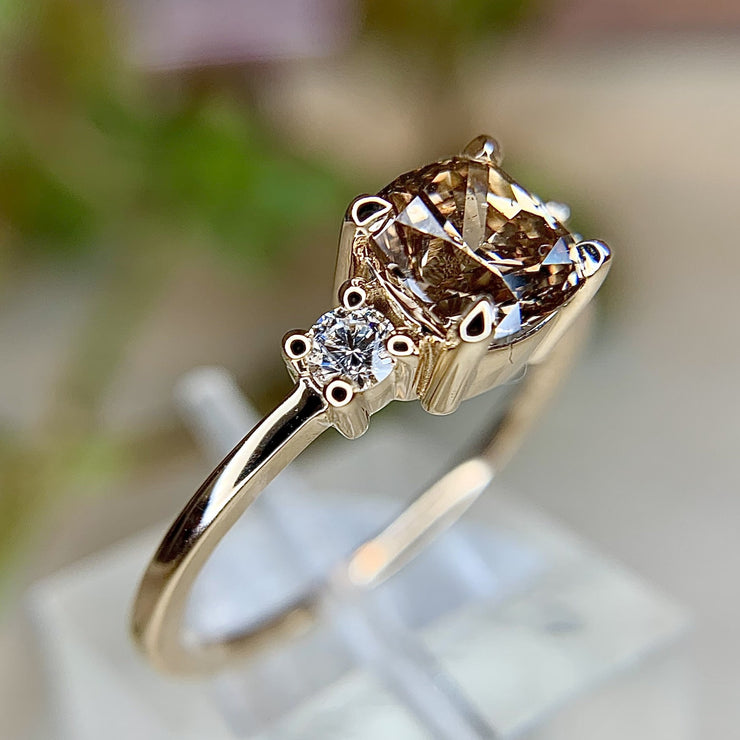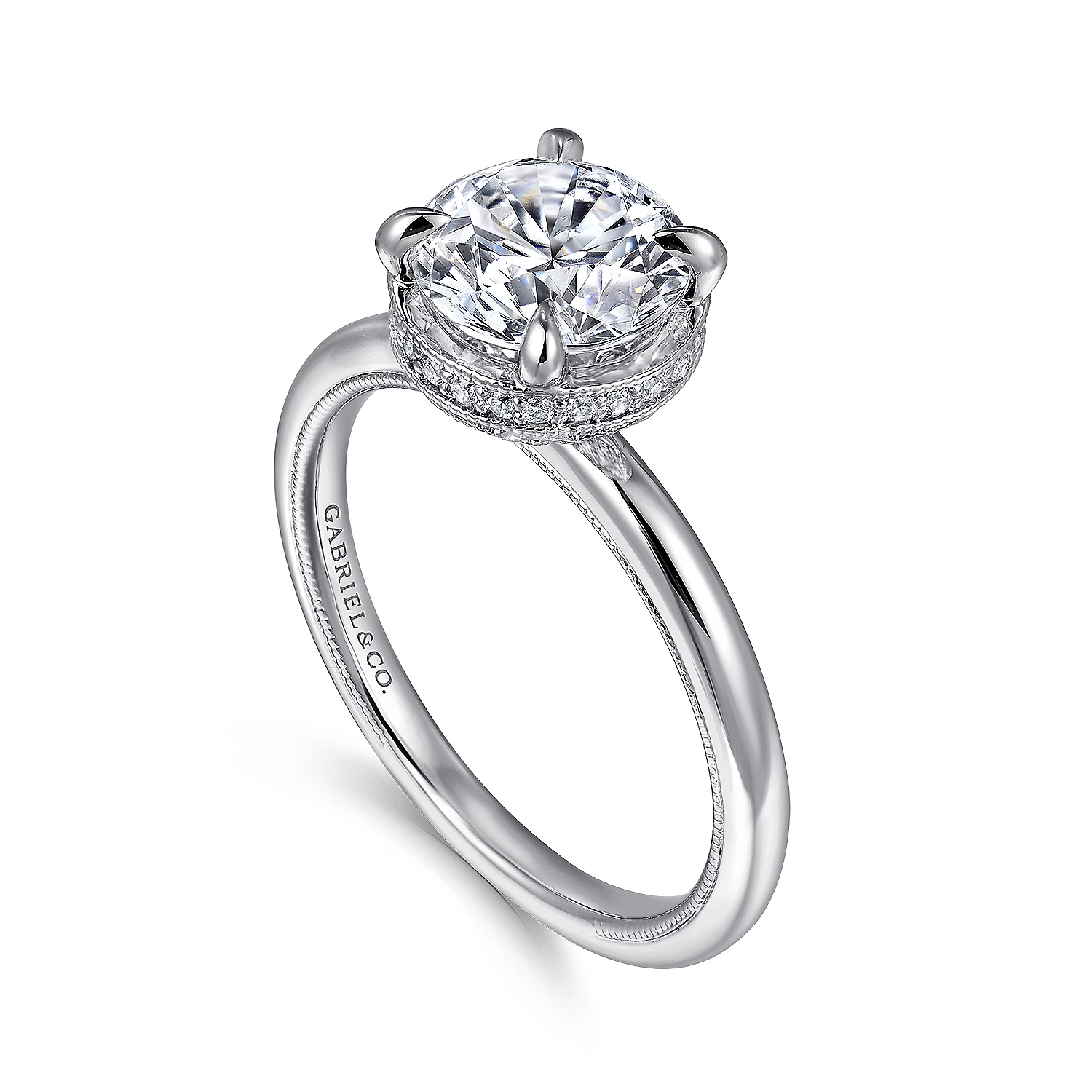lab grown diamond engagement rings: A Budget-Friendly Path to Big Sparkle
Why Laboratory Grown Diamond Involvement Rings Are the Perfect Selection for Eco-Conscious Couples
Lab-grown Diamond interaction rings present an engaging option for pairs that focus on sustainability. These rubies provide a striking alternative to typical extracted stones, significantly decreasing ecological injury. They are created utilizing innovative strategies that ensure both quality and sparkle. As awareness of ethical sourcing expands, several couples are reconsidering their options. What ramifications does this change have for the future of the Diamond industry?

The Environmental Impact of Traditional Diamond Mining
Diamond mining has long been commemorated for its allure and reputation, the environmental consequences of conventional mining methods are increasingly worrying. The removal of diamonds commonly entails extensive land interruption, leading to logging and habitat loss for numerous species. Additionally, the process takes in vast quantities of water, which can deplete neighborhood sources and negatively influence surrounding communities. Harmful chemicals used in mining operations can pollute nearby water sources, better jeopardizing both human populaces and wild animals.
In addition, the carbon impact connected with moving mined rubies includes in the general ecological toll. The heavy machinery and devices required for mining operations contribute substantially to greenhouse gas discharges. As awareness of these problems grows, numerous customers are starting to doubt the sustainability of traditional Diamond sourcing. This shift in viewpoint highlights the immediate demand for even more ecologically pleasant alternatives, such as lab-grown rubies, which promise to decrease the ecological impact while maintaining the appeal and worth of Diamond fashion jewelry.
The Refine of Creating Lab-Grown Diamonds
Lab-grown diamonds are produced with two main techniques: High Stress High Temperature (HPHT) and Chemical Vapor Deposition (CVD) The HPHT process imitates the natural problems under which rubies create in the Planet's mantle. It involves subjecting carbon to extreme pressure and temperature, causing the crystallization of carbon atoms into Diamond frameworks. On the other hand, the CVD technique permits the growth of diamonds in a regulated setting. This strategy uses a gas combination consisting of carbon, which is stimulated to form plasma, allowing carbon atoms to deposit onto a substrate and grow layer by layer right into Diamond crystals.
Both approaches create diamonds that are chemically and physically the same to natural rubies - lab grown diamond engagement rings. The selection of method typically depends upon the desired qualities and dimension of the final treasure. This cutting-edge technique to Diamond development not just offers a lasting choice however also permits for higher openness in the sourcing of materials
Quality and Luster of Lab-Grown Diamonds
While many might think that lab-grown diamonds differ in high quality from their all-natural equivalents, they in fact display similar sparkle and visual charm. Lab-grown rubies are created utilizing advanced modern technology that reproduces the natural conditions under which diamonds form, resulting in rocks that have similar physical and chemical residential properties. These rubies achieve the exact same outstanding clarity and color grading as extracted diamonds, making them tantamount to the naked eye.
In terms of luster, lab-grown diamonds commonly present superior light performance as a result of their precision-cut elements. The rigorous quality control during production guarantees that these diamonds fulfill high standards, boosting their aesthetic allure. In addition, they are available in a range of forms and sizes, permitting pairs to find the excellent ring to match their personal style. Ultimately, lab-grown rubies supply a charming combination of beauty and top quality, making them an enticing selection for involvement rings.
Honest Considerations in the Diamond Industry
As consumers become increasingly familiar with the ethical ramifications bordering Diamond sourcing, the discussion around the Diamond sector has moved substantially. Problems about conflict diamonds, typically described as "blood diamonds," have actually prompted require higher transparency and responsibility in mining practices. These rubies are extracted in battle zone and sold to finance armed problem, elevating serious ethical inquiries for customers. Furthermore, the environmental effect of standard Diamond mining has come under examination, with issues such as habitat devastation and water air pollution regularly highlighted.
In reaction, several have transformed to lab-grown rubies as a more honest choice. These stones are developed in controlled settings, eliminating the dangers connected with mining. Subsequently, lab-grown diamonds interest consumers looking for to make accountable selections that line up with their worths. The growing demand for moral practices remains to reshape the Diamond sector, promoting lasting and click resources gentle sourcing approaches.
Cost-Effectiveness of Lab-Grown Diamonds
Lab-grown rubies supply an engaging alternative for consumers looking for cost-efficient interaction rings - lab grown diamond engagement rings. Priced considerably lower than their natural counterparts, they provide superb worth for money without giving up top quality or look. This cost makes lab-grown diamonds an eye-catching option for budget-conscious pairs
Lower Cost Factor
Many pairs are discovering that choosing lab-grown Diamond interaction rings can significantly decrease their general expenses without compromising quality or elegance. These rubies commonly cost 30% to 50% much less than their extracted counterparts, making them an eye-catching option for budget-conscious customers. The price advantage occurs from lower manufacturing costs and a much more anonymous reliable supply chain, which eliminates the expenditures connected with mining. Because of this, pairs can buy larger rocks or even more complex setups, enhancing the overall visual of their rings. This affordability not just enables for a more customized option yet additionally straightens with the worths of eco-conscious couples who focus on sustainability while staying economically wise. Lab-grown diamonds provide a best blend of elegance and economy.
Value for Money
The cost-effectiveness of lab-grown diamonds extends past their first cost, using outstanding value for cash. Unlike all-natural rubies, lab-grown choices can be as much as 40% cheaper while keeping the same physical and chemical properties. This price allows couples to purchase bigger or higher-quality stones without surpassing their budgets. Furthermore, the resale worth of lab-grown diamonds is gradually boosting, making them a more feasible option for future economic considerations. In addition, lab-grown diamonds commonly include lower environmental and moral prices, supplying pairs with comfort. By picking lab-grown diamonds, eco-conscious couples not only save money however likewise add to sustainable methods, improving their overall value proposal in the precious jewelry market.

Customization Options for Lab-Grown Engagement Rings
How can couples ensure their involvement ring reflects their distinct love tale? Customization options for lab-grown Diamond involvement rings give an ideal service. Couples can pick from various Diamond forms, including round, princess, or oval, allowing them to pick a style that reverberates with their personal aesthetic.
In addition, they can choose on the useful site setting-- be it jewelry, halo, or vintage-inspired-- making sure the ring enhances the Diamond's brilliance. Steel selections, such as white gold, yellow gold, or increased gold, better boost customization, accommodating individual tastes.
Pairs can incorporate purposeful engravings, adding an emotional touch that symbolizes their bond. With these comprehensive modification alternatives, lab-grown Diamond involvement rings not only embody a couple's love but likewise reflect their values, making them a best selection for eco-conscious partnerships. Inevitably, these rings become a real depiction of their distinct trip together.
Often Asked Inquiries
Exactly How Do Lab-Grown Diamonds Compare to All-natural Diamonds in Worth?
Lab-grown diamonds commonly set you back 20-40% less than natural rubies, providing similar top quality and look. Their reduced rate point makes them an attractive choice, especially for budget-conscious customers looking for sustainable and ethical choices in fashion jewelry.

Are Lab-Grown Diamonds Much More Durable Than All-natural Diamonds?
Lab-grown rubies possess the same physical and chemical properties as natural rubies, including longevity. Both types score a best 10 on the Mohs range, ensuring that lab-grown rubies are equally immune to damaging and damages.
Can Lab-Grown Diamonds Be Re-selled Quickly?
Lab-grown diamonds can be re-selled, but their market demand varies compared to natural rubies. While some purchasers value their moral beginnings, others may prefer natural options, potentially influencing resale value and simplicity of transaction.
What Are the Care Recommendations for Lab-Grown Diamonds?
Lab-grown diamonds call for normal like maintain their radiance. Cleaning up with mild soap and warm water, utilizing a soft brush, and preventing severe chemicals will aid maintain their sparkle and stability for years to find.
Are There Any Qualifications for Lab-Grown Diamonds?
Lab-grown rubies can be accredited by trusted companies such as the Gemological Institute of America (GIA) and the International Gemological Institute (IGI) These qualifications assure adherence, authenticity, and top quality to industry standards for lab-created gems.
Both methods create diamonds that are chemically and physically identical to all-natural rubies. Lab-grown diamonds are created making use of advanced modern technology that reproduces the natural problems under which rubies develop, resulting in rocks that have similar physical and chemical properties. Lab-grown rubies generally cost 20-40% much less than natural rubies, supplying comparable high quality and appearance. Lab-grown diamonds possess the very same physical and chemical homes as all-natural diamonds, consisting of toughness. Lab-grown diamonds can be marketed, however their market need varies contrasted to all-natural rubies.